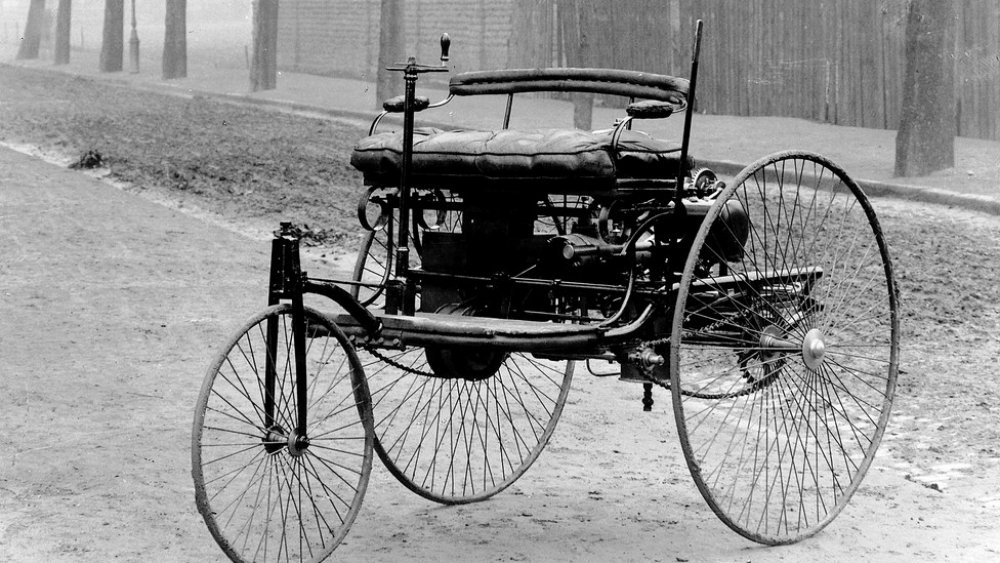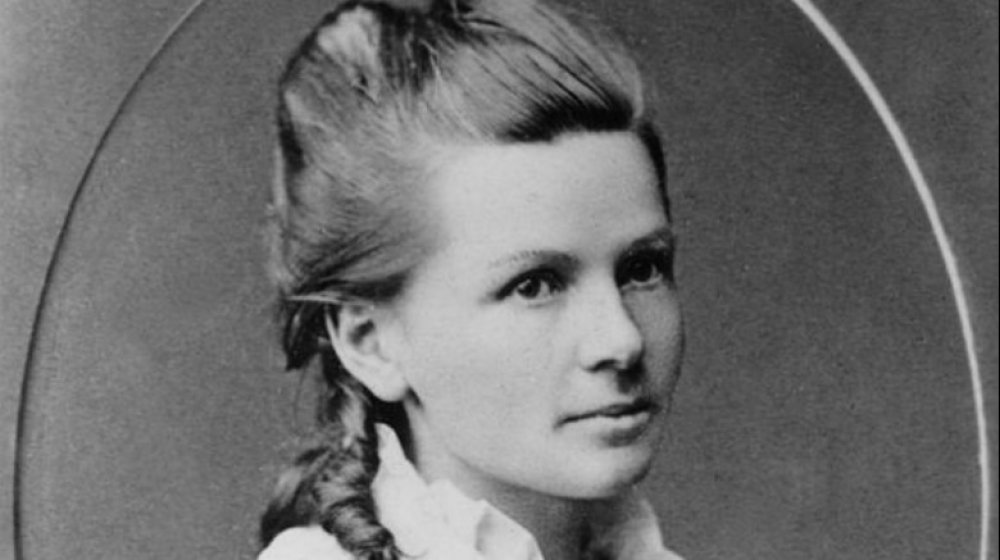The Untold Truth Of The World's First Automobile
The first car was invented by Henry Ford, who built the quadricycle in a shed behind his house in Detroit. It was a horseless carriage, powered by a gasoline engine, unveiled June 4, 1896, reports Automotive News. Ford went on to create a transportation revolution that has since touched nearly every nation in every corner of the globe. Because 'Murica, right?
Not so fast, buckaroo. It's true that Ford was a visionary in terms of mass production, and was responsible for one of the most prolific models of automobiles in history — the Model T, with 15 million produced between 1908-1927, says History, a record that held until the Volkswagen Beetle beat it in 1972. But he wasn't first.
And before we go any further, let's distinguish: we're talking about gasoline-powered vehicles. There were attempts at steam-powered carriages; Nicolas-Joseph Cugnot, a French engineer, built a kind of steam-powered tricycle in 1769 specifically for hauling around artillery, History relates. It would only go for about 15 minutes, and weighed in the tons. No word about how easy it was to parallel park.
The first road trip belonged to Bertha Benz
As for gasoline-powered vehicles, the history is a little more overlapping. Even the Library of Congress says the question of "first" "does not have a straightforward answer." Like a lot of technology, small gains were made by various individuals, and those advances eventually came together to create something that was very much bigger than the sum of its parts.
On January 29, 1886, two different patents for gas-powered vehicles were filed by two different inventors, Karl Friedrich Benz and Gottlieb Daimler, both names that people who pay attention to cars will recognize even today. Benz is usually given credit for the first true automobile. His was a three-wheeled affair with an integrated chassis. For his part, Daimler's vehicle boasted four wheels and a higher-powered engine.
Stripped down to the basics, it was Benz's invention that more closely resembles what clogs the highways and byways of today's world. By 1888, says Live Science, he had built three prototypes in private. His wife, Bertha, decided the time was right to expose the world to the possibilities of her husband's creation, and used the latest of the models to drive herself and her teenage sons 66 miles to visit her mother. She had to make some repairs along the way — a hairpin and her garter came in handy, we're told — but the trip proved that the invention was practical. Benz eventually merged with Daimler to create the company now known as The Daimler Group — which manufactures (among others) the Mercedes-Benz.

